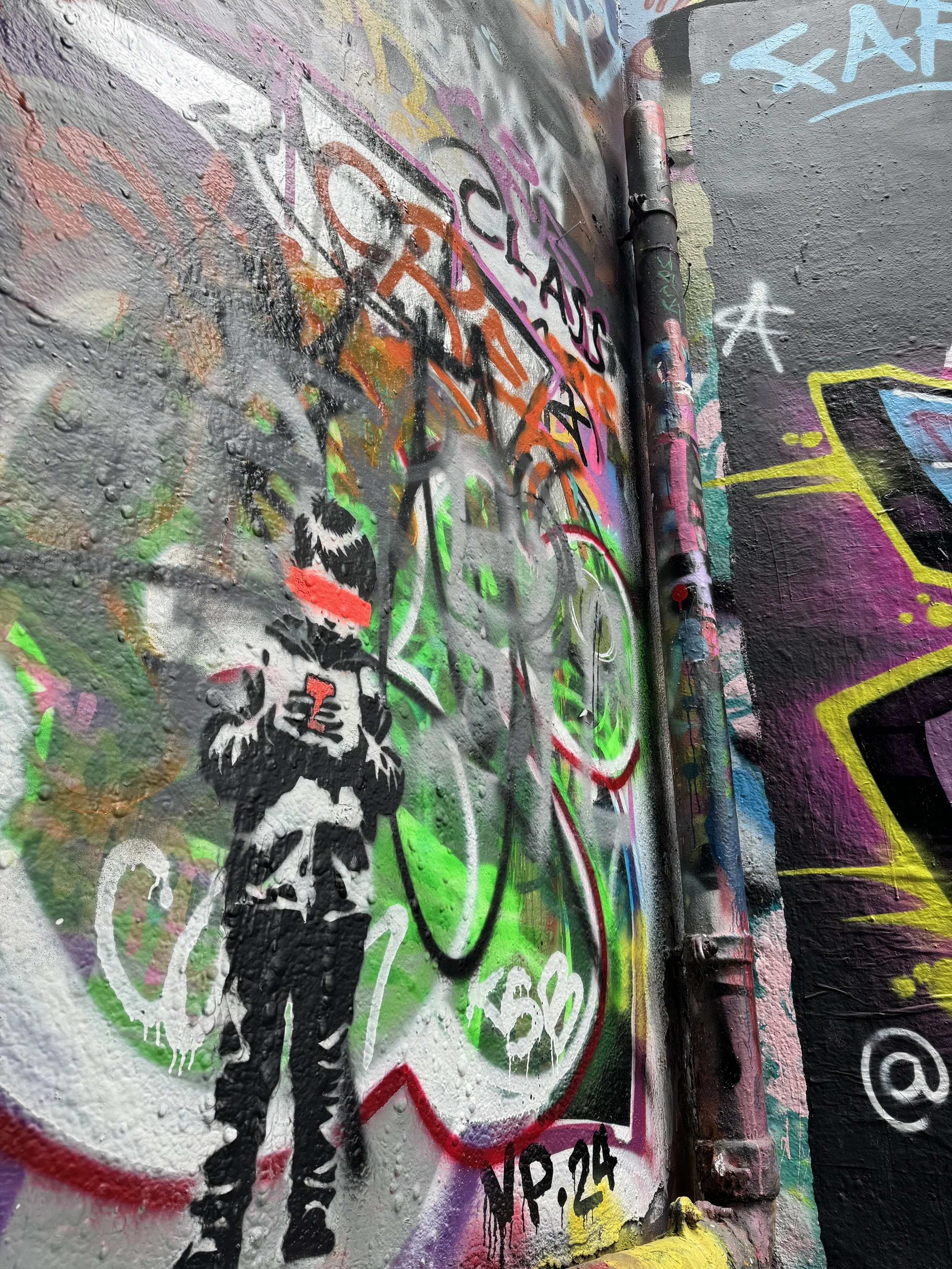Childhood Not Found
Spray paint on wall (stencil). Leake Street Arches, London. 23rd April 2024
When I created Childhood Not Found, I felt I was crossing a threshold in my artistic journey, my first step into graffiti and public art. It was early morning at Leake Street Arches in London, a place vibrating with the layers of voices and marks that define urban culture. I wanted to add mine to that chorus, not to decorate it, but to confront it, with my message about how technology is quietly eroding the essence of childhood, creativity, and mental well-being.
At the centre of the piece stands a lone child, painted in bold black and white silhouettes. The face is featureless, the identity erased beneath a sharp red band that also colours the device in their hands. This chromatic echo, eyes and screen glowing as one, embodies the blindness of a generation consumed by its own illumination. I wanted that electric red to feel both seductive and violent: the light that draws us in and the barrier that separates us from the world.
The connection between the eye-cover and the device traces back to my earlier works from 2019, where children appeared colourless, almost ghost-like, absorbed, hollowed out by their screens. In those pieces, I used vibrant, chaotic backgrounds to symbolise the world of play and imagination from which they had withdrawn. In Childhood Not Found, the approach evolved. I began using heavier lines, deeper shadows, and a bolder stencil aesthetic, visual language that could survive the noise and texture of the street.
Taking this work outside the studio, into a public space like Leake Street, was an intentional act of democratisation. I wanted the message to belong to everyone who walked by. There’s something powerful about speaking directly to people on their way to work or home, without mediation, without a gallery wall to soften the encounter. The street becomes a gallery that can’t be ignored.
The title, Childhood Not Found, borrows from the familiar digital error message, “404: Not Found.” For me, it captures the quiet tragedy of a generation losing access to its own innocence, presence, and capacity for wonder. It’s a work that is both intimate and collective, poetic yet unsettling, a public outcry disguised as a child on a wall.
Creating this piece marked a turning point. It was the beginning of my dialogue with the street: a shift from the controlled environment of the studio to the unpredictability of public space. Childhood Not Found not only solidified my style but also reaffirmed my purpose, to make visible what has become invisible, to question what technology is doing to the next generation, and to invite reflection in the very places where distraction reigns.



